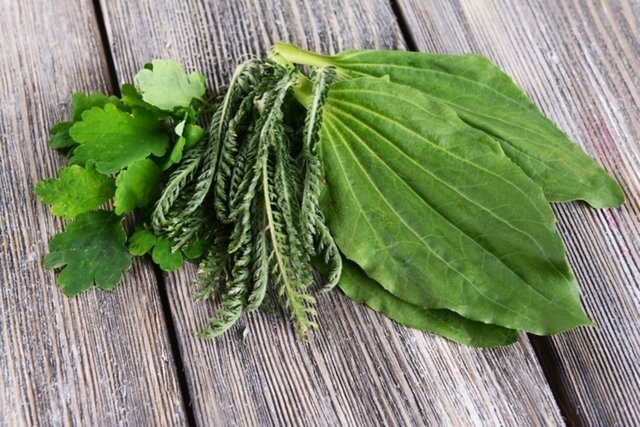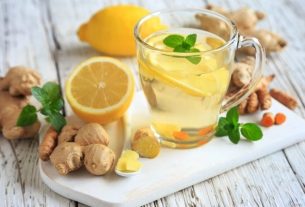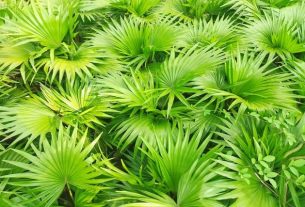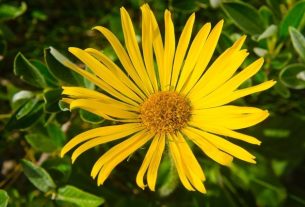Plantain is a medicinal plant that can be used to help treat flu, colds and inflammations, especially in the airways and digestive tract, as well as preventing the appearance of ulcers, diarrhea and helping to control blood sugar.
These benefits are due to the fact that plantain is rich in flavonoids, alkaloids, terpenoids, iridoids, mucilagens and other compounds that have antibacterial, antiviral and anti-inflammatory properties, mainly. Its scientific name is Plantago major and belongs to the Plantaginaceae family.
The most used parts of plantain are its leaves and seeds, which can be purchased in health food stores, some pharmacies and street markets, and can be used to prepare infusions or to make compresses and to place on the skin to help wounds heal, for example. .

What is it for
Due to its properties, plantain can be used to:
1. Facilitate wound healing
This property is due to the fact that plantain is rich in polyphenols, polysaccharides and antioxidants, which are responsible for protecting cells against destruction caused by inflammatory mediators, which facilitates tissue repair.
2. Prevent the emergence of gastric ulcers
Some scientific studies indicate that plantain leaves and seeds help prevent the formation of gastric ulcers, as they have the ability to reduce the acidity of gastric juice, relieving burning and pain in the stomach.
Furthermore, it is also capable of inhibiting the activity of bacteria Helicobacter pyloriwhich when not identified and treated correctly, can lead to the formation of stomach ulcers.
3. Control blood sugar
Plantain has antidiabetic activity, because it improves the mechanism by which pancreatic cells regulate blood sugar levels. In addition, it also contains flavonoids, sterols and tannins, which are compounds that have a hypoglycemic effect.
4. Fight diarrhea
Some studies confirm that plantain helps to improve diarrhea symptoms as it contains tannins, flavonoids and alkaloids, which reduce the secretion and accumulation of fluids in the intestine, exerting an anti-diarrheal effect.
5. Fight infections
Due to the presence of polysaccharides in its composition, plantain has protective effects against some bacteria such as Streptococcus pneumoniaeas well as against viruses, including adenovirus, and is therefore widely used in the treatment of common flu.
Furthermore, the leaves of this plant can be used to prepare plantain tea, which helps to fluidize the secretions accumulated in the bronchi, relieving coughs. It can also be used to gargle to treat changes in the mouth and throat, such as mouth ulcers, pharyngitis, tonsillitis and laryngitis, exerting an anti-inflammatory and antibacterial effect.
Plantain also has action against bacteria associated with skin infections and urinary system infections, such as Staphylococcus aureus, Escherichia coli e Candida albicans, for example.
6. Prevent premature aging
Because it is rich in antioxidants, mainly phenolic compounds and flavonoids, plantain prevents damage caused by free radicals to cells, preventing premature aging.
How to use
Plantain leaves can be used to season meals, prepare tea or make a compress to put on the skin, while its seeds can be ingested.
1. Plantain tea
Ingredients
- 3 to 4 g of plantain leaf tea;
- 240 mL of water.
Preparation mode
Boil the water and then remove from the heat and add the plantain leaves, letting it rest for about 3 minutes. Leave to cool, strain and drink up to 3 cups a day.
2. Plantain compresses
Compresses can be prepared with the tea itself, soaking a cloth in the tea and placing it on the skin at the wound site in order to help it heal and reduce skin inflammation.
3. Plantain juice
Ingredients
- 2 tablespoons of fresh cut plantain leaves;
- 1 cup of cold water.
Preparation mode
Place the water and leaves in a blender and mix well. Then strain and drink on an empty stomach.
4. Plantain poultice
Knead and heat the plantain leaves a little and then apply directly to the affected parts of the skin, whether due to wounds, inflammations, ulcers or insect bites.
5. Plantain dye
Plantain is also available in the form of a tincture in a 1:3 ratio, with 6 to 12 drops being placed in a glass of water or under the tongue, about 3 times a day. It is important to shake the tincture well before use and store the bottle in a cool, dark place.
Possible side effects
The main side effects of plantain include drowsiness, intestinal cramps, dehydration, flatulence, bloating, nausea, vomiting, indigestion and sternum pain.
Who shouldn’t use
Plantain is contraindicated for pregnant women, women who are breastfeeding and patients with heart problems. Furthermore, it is not recommended for people who have intestinal obstruction, hypotension and before surgical procedures.
It is necessary that a doctor be consulted when a person has diabetes, as plantain seeds can greatly reduce blood sugar levels, potentially causing hypoglycemia.
In relation to children, the use of plantain should be discussed and guided by a pediatrician, because to date no studies have been carried out on the effects of this plant on children.

Sign up for our newsletter and stay up to date with exclusive news
that can transform your routine!
Warning: Undefined array key "title" in /home/storelat/public_html/wp-content/plugins/link-whisper-premium/templates/frontend/related-posts.php on line 12
Warning: Undefined array key "title_tag" in /home/storelat/public_html/wp-content/plugins/link-whisper-premium/templates/frontend/related-posts.php on line 13



